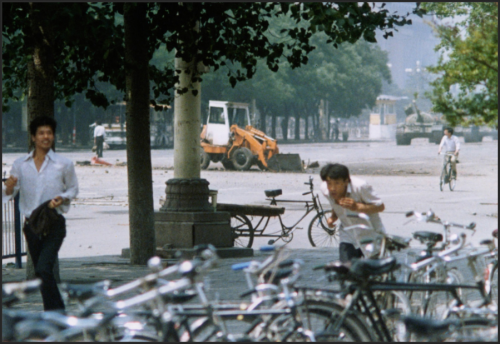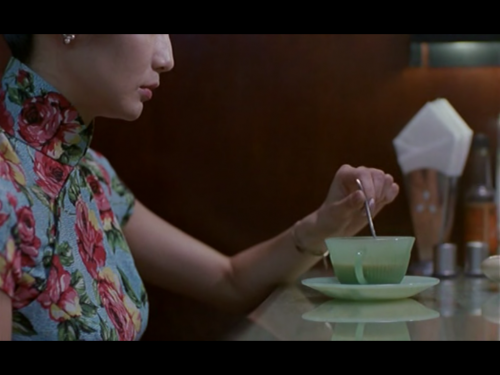 This photo is from an excellent 70s photo book called Handmade Houses. I bought it after I read this inspiring little piece on Inhabitat, and it has got me thinking about getting back to basics. In this economy, basics may be all there are. In the winter and spring of 1997, I helped my friend Steve make a house by hand on the California coast. At first, it was like Robinson Crusoe. No possessions to speak of, other than my hammer, some books, the sun and ocean, fresh air and work. We worked all day, doing what felt like good, wholesome labor in the sun, banging, sawing, sizing things up.
This photo is from an excellent 70s photo book called Handmade Houses. I bought it after I read this inspiring little piece on Inhabitat, and it has got me thinking about getting back to basics. In this economy, basics may be all there are. In the winter and spring of 1997, I helped my friend Steve make a house by hand on the California coast. At first, it was like Robinson Crusoe. No possessions to speak of, other than my hammer, some books, the sun and ocean, fresh air and work. We worked all day, doing what felt like good, wholesome labor in the sun, banging, sawing, sizing things up.  This is where I lived for a while.Then El Nino arrived. After a few weeks, the whole thing had become more like Lord of the Flies. Days and days of rain, mudslides on Highway 1, crazy-making isolation. In between squalls, we framed the house, affixed the plywood sheathing, put on the deck and roof, and ran the wiring. At some point, I came down with a cold, which eventually became pneumonia. In the spring, I retreated to the warmth of Doug and Ted's house in Berkeley to recuperate, a few weeks later I'd taken a job at a museum, and that was the end of simplicity. For the time being, anyway.
This is where I lived for a while.Then El Nino arrived. After a few weeks, the whole thing had become more like Lord of the Flies. Days and days of rain, mudslides on Highway 1, crazy-making isolation. In between squalls, we framed the house, affixed the plywood sheathing, put on the deck and roof, and ran the wiring. At some point, I came down with a cold, which eventually became pneumonia. In the spring, I retreated to the warmth of Doug and Ted's house in Berkeley to recuperate, a few weeks later I'd taken a job at a museum, and that was the end of simplicity. For the time being, anyway.
So you can't stop moonwalking
I won't bore you with my thoughts on Lisa Marie Presley's MySpace thing about Michael ("I wanted to save him. I wanted to save him from the inevitable which is what has just happened"), or relate my story of finding out that the rumor was true (upon reading this tweet from Lil' Jon: "RIP M J!!"), or discuss Justin's excellent email about how MJ helped him stay in his "eight-year old zone." I will only spread some love about my favorite MJ recording, which is a very scratchy demo version of "Working Day And Night" from the Special Edition of "Off the Wall."[audio:https://douglemoine.org/muz/mj_workin.mp3]Enjoy.
Meetings at the crossroads
Remember when Robert Johnson met the devil at the crossroads and returned with a whole new kind of blues? Last night, we watched "Notorious," the Biggie Smalls biopic, and there's a similar moment. The movie sort of glosses over where Biggie's style came from, implying that it began on the street, but that Biggie really enhanced it during nine months in a North Carolina prison. It reminded me of Martin Scorsese's Bob Dylan documentary, No Direction Home. Where did the Dylan sound come from? Scorsese diligently goes through all of the members of the 60's Village scene, but then there's a gap in which Dylan leaves the scene for a few months and then re-emerges with the style we all know. What is it about creating a new style that it has to happen in secret? "Notorious" is terrible, by the way. I wouldn't have thought it possible to make a wooden, utterly uninteresting movie about Biggie, Brooklyn, the early 90's, and East Coast v West Coast, but they found a way to do it.
The NYT's Lens blog recently posted a couple of great articles about the photographers who captured the Tienanmen Square protests in 1989. The first offers four riveting oral histories from photographers who captured the "Tank Man" in his moment of defiance, and the second adds a new twist: this amazing image from street level.
 Disorder. People fleeing. This was happening as the Tank Man, seemingly so calm, stood in the street. I also think it's interesting that all the men in the photo are wearing — as a commenter on the NYT blog put it — "the same drab clothes." A true illustration of how much has changed in China in the last 20 years.
Disorder. People fleeing. This was happening as the Tank Man, seemingly so calm, stood in the street. I also think it's interesting that all the men in the photo are wearing — as a commenter on the NYT blog put it — "the same drab clothes." A true illustration of how much has changed in China in the last 20 years.The Roshomon-like details in all of the photographers' stories are vivid and heartbreaking: "Vehicles were smoldering," "a line of students facing a line of soldiers and a column of tanks," "another volley of shots rang out from where the tanks were, and people began ducking, shrieking, stumbling and running," "some guy in a white shirt runs out in front," "a man waving two plastic shopping bags," "waving his jacket and shopping bag," "remonstrating with the tank driver in an act of defiance," "he then disappeared into the crowd," "the PSB (Public Security Bureau) grabbed him and ran away."
And then what happened?
Charlie Cole: "I then placed the tank roll in a plastic film can and wrapped it in a plastic bag and attached it to the flush chain in the tank of the toilet."Stuart Franklin: "The film was smuggled out in a packet of tea by a French student and delivered to the Magnum office in Paris."Jeff Widener: "I gave all my rolls of film to [someone named] Kurt/Kirk who smuggled it back to the A.P. office in his underwear. The long-haired college kid was wearing a dirty Rambo T‑shirt, shorts and sandals." Arthur Tsang Hin Wah: "A colleague rode over on a bike and picked up the film."And Terril Jones, the reporter who captured the shot at street level: "I never published them, and only showed them to a few friends and fellow reporters."And the rest is history. That keeps unfolding, I guess.
Walking around the Maxwell Food Market near Singapore's Chinatown reminded of Wong Kar Wai's excellent movie about Hong Kong in the early 60's In the Mood for Love. After I watched it last night, I couldn't decide whether I wanted to actually travel back in time, or just walk inside an imagined version of the past. 


I'm doing some work in Singapore right now, and I've quickly noticed a couple of things: Singaporean people love to shop, and they love deals. But they don't have access to certain brands — American Apparel, Forever 21, Victoria's Secret, etc. To get stuff from these places, they have to order stuff over the Internet, and have it shipped across the world. And this can be really expensive.
A community of practice. The practice of finding deals.So, some industrious, deal-seeking shoppers have created LiveJournal communities in which shoppers can band together to save shipping costs from online retailers. These so-called "sprees" usually correspond to global shipping deals offered by a retailer, and they're available until certain criteria are met — minimum amounts for the shipping deal, or whenever the spree-launcher decides to take care of the order.In the above example, the spree is for a retailer called "Apparel," it's open, and there are 35 "comments," many of which are actually "orders." That's right, you submit your order in a public space, so that others can see how close the spree is to being filled.In order to build trust among their users, the community above provides a way to give feedback; they've created a separate community called "spreefeedback" where users leave comments about the trustworthiness of the users who launch the sprees. Hacky, but apparently effective. Pretty cool, huh?On related notes, Jane Fulton Suri's Thoughtless Acts?: Observations on Intuitive Design is filled with intriguing examples of everyday hacks in the physical world.
Dr. Phil's worst nightmare
Charles Barkley recently referred to Ron Artest as "Dr. Phil's worst nightmare," but he's kept a cool head during this series with the Lakers. Mostly. I mean, he's only got, what, three T's? Anyway, he's intense on the court, but I think that even Dr. Phil would be impressed with his ability to separate his work persona from his life persona. At last night's post-game press conference: "'Five Dollar Foot-Long' is one of the best songs … That's a hot song. You've got the FreeCreditReport.com, and then 'Five Dollar Foot-long' comes on. When 'Five Dollar Foot-long' comes on, they should play that in the club." I feel you, Ron. For the last three weeks, this has popped into my head: "Five. Five dollar. Five dollar foot loooong. G‑g-g-goin on. At Subway." Again. And again.
Their lives on the B‑list
Question: Is there a better litmus test of 1980's celebrity than a guest appearance on Love Boat? Wikipedia's master list includes Corey Feldman, Pat Morita, Rich Little, Menudo, the Village People, and the Pointer Sisters. Also included: Lorne Greene, Shecky Green, Pam Grier, and Andy Warhol. Surprisingly omitted: The Harlem Globetrotters.
Days of old (growth)
Sarah brought over an excellent old book called The Trees of California, by Willis Linn Jepson. It was published in 1909, and it had some amazing photos of the redwoods up north.
The caption reads: "Fig 15. REDWOOD (Sequoia sempervirens Endl.) Making the "undercut", which determines the direction of the fall, on a tree 16 feet in diameter. Humboldt woods." Photo: A.W. Ericson.Amazon sells Trees of California for $75, but you can read it for free at Google Books. Cool.
Doug LeMoine is puzzled that the construction of Facebook status updates requires me/him to refer to myself/himself in the third person. This format gives structure to the News Feed, but it also encourages the updater to craft the update as a sentence beginning with his/her full name. The forced third-person would seem to create myriad grammatical problems as people try to construct meaningful sentences, but pretty much everyone ignores grammatical correctness (not surprising). The surprising thing is, grammatically incorrect status updates don't really seem weird (to me) anymore.(It's possible that I'm taking this all far too seriously).When I first joined Facebook, I dutifully wrote all of my status updates in the third person, as the format dictates. Because I am both a grammar snob and a rule-follower.
Rule-abiding: Doug … his

This construction is appropriate for the feed, but it's also terribly awkward. Statuses are usually personal, "microblog-ish" bits of content, and it just sounds weird when personal stuff is written in the third person. Recently, I started to lapse into the first person in the body of the status, and while doing so, I cringed in anticipation of the inevitable condemnation.
Rule-bending? Rule-breaking? Rule-adapting: Doug … my

But so far, there has been no condemnation forthcoming. Why? Maybe we all quickly become blind to the totally obvious disagreement? Or maybe it just makes cognitive sense that the content of the status will be in the first person? If the latter is true, how soon will we be updating Fowler and Strunk & White to reflect this new kind of usage?

